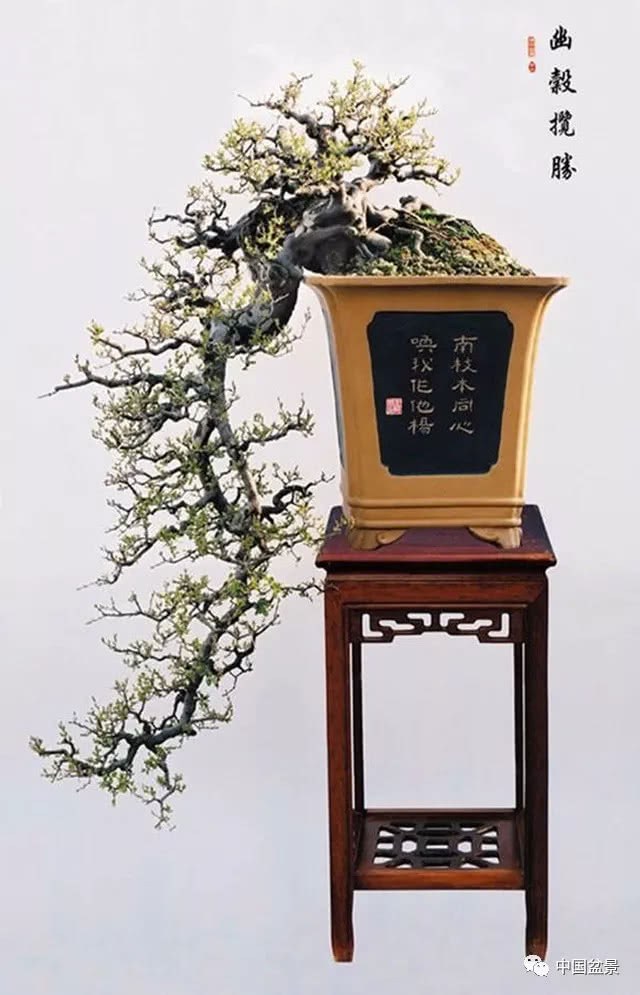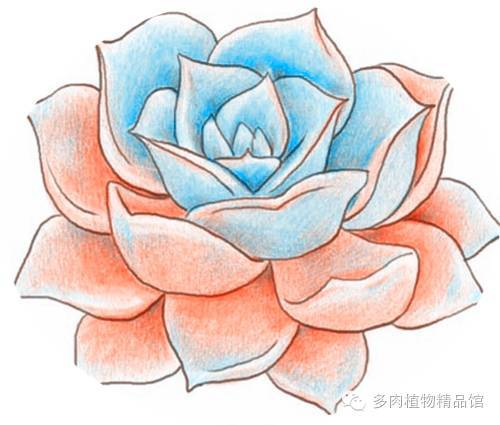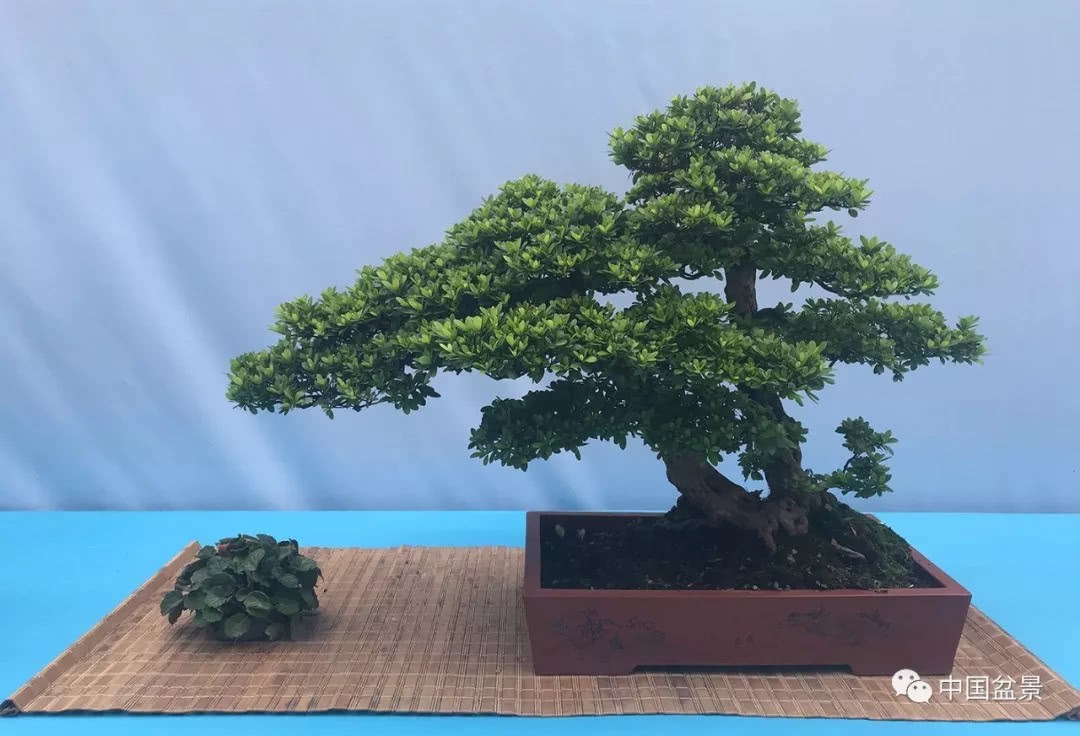Tree design and manufacture of cliff bonsai

Tree design and manufacture of cliff bonsai
Photo, text | Red Leaf Bonsai
(this article is selected from Red Leaf Bonsai, and the copyright belongs to the original author.)
The cliff-style bonsai originated from the upside-down looseness on the cliff, with its roots exposed its claws, danced by strong winds and torrential rain, always firmly clinging to the cliff, giving people a feeling of strength and unyielding strength to pat the sky. Therefore, as a typical dynamic bonsai, cliff bonsai must emphasize the "natural charm, lively rhythm, flying momentum, freehand effect." The main point of its modeling is to have ups and downs, plant trunk hanging downward, hanging roots and claws, firmly holding on to the edge of the basin, fearless in the face of danger, smooth trunk extension, natural proportion and clear setbacks. I have a sense of rhythm. The tail of the tree should be alive, the branches should be appropriate, the concession should be appropriate, and it should be sparse and dense. The modeling steps are as follows:
The first step: to plant the billet diagonally or horizontally, so as to avoid the problem of uncoordinated bending of the dry base. Plastic surgery should be carried out in time, after the trunk is long and thick, it will be difficult to meet the requirements of the tree design.
The second step: flat tie with iron wire or brown wire, the trunk is too hard can be cut dry (that is, use a sharp knife in the rough part of the need to bend vertical cut a deep hole, penetrate the trunk, the cut direction should be perpendicular to the bending direction, and then lined with hemp tendons or plastic film protection). In the process of Panza, it is required to do: there are hills in the chest, the intention is first, the shape is set at will, and the scene comes out according to the feeling.
The third step: choose the support of the branches, keep the spare branches, cut off the excess branches, and then cut off the spare branches after forming.
Cliff-style tree stump bonsai pays attention to lifting roots. Lifting root can not only show its old tree state, but also alleviate the momentum of bonsai, resulting in visual balance. If you only rely on the root modeling, you can not meet the balance requirements of bonsai, so you can use the point stone to achieve the goal.
Step 4: match the basin. It is generally appropriate to match a thousand-barrel basin or bucket basin, not a shallow basin. The position of the basin should protrude the root of the tree, be as close to the basin corner as possible, and pay attention to the stillness in the movement, balance of weight and weight, and stone should be matched with stone.
According to the length and angle of tree trunks hanging upside down, cliff bonsai can be divided into three basic forms: big cliff, small cliff and semi-cliff. If you look at the changes in the layout of roots and dry branches, there are many different artistic shapes in cliff style, such as the following:
In the "hook-like" artistic modeling, all the tree trunks hang upside down out of the basin mouth, leaving only the roots in the basin, and the whole tree is like hanging in the basin mouth with hooks.
"exploring branches" cliff art modeling, tree trunks do not hang down, but by a branch drooping to form a cliff-style artistic shape. The trunk can be straight, oblique and lying, but it should not be too high so as not to dilute the artistic expression of the cliff. These three forms of expression can be called straight branch cliff, oblique branch cliff and horizontal branch cliff respectively.
The artistic shape of the "bald top" cliff, the trunk becomes bald in a section of the basin without branches and leaves, and the leaves are distributed on the drooping trunk outside the basin. Although the bald head is clumsy, the overall shape is simple and elegant. Suitable for matching stone.
When we trim the cliff bonsai, one of the most important skills is to pick the heart. That is, pruning the tender branches and leaves above the cliff type, restraining the cliff type bonsai in a certain direction, growing too fast, so that the cliff type trees grow evenly. Another use is to control the growth of cliff trees, that is, if you want the bonsai of cliff trees to grow in that direction, just keep the twigs in this aspect.
Cliff-style bonsai, we need to set up a trimmed shape, and in order to ensure that it grows in accordance with the design style, the late need to constantly cut off the new buds and so on. Let it grow into a reasonable shape. There are still some branches that must be cut off. It is those dry branches, poorly growing branches, crossed branches, and branches whose curvature affects the shape, which must be cut off. One is to grow healthily, and the other is to be more beautiful.
Link 1: several cliff shapes for reference
Fearless in the face of danger: this is a single full cliff shape, with the trunk tilting at right angles and gradually extending downward and outward, with a large curved angle, hanging roots and claws clinging to the basin soil, and the center of gravity of the trees outside the basin. This kind of shape gives people the feeling of being upright and patting the sky.
Jiaolong explore the sea: this is the usual name of the whole cliff shape, the trunk is rugged out of the basin, not straight down, but drooping back up, and then twisted by vertical and horizontal direction to extend and float, such as the dragon taking off.
Hanging gold hook upside down: this is another shape of a single whole cliff, with the trunk hanging S-shaped to the left or right, the center of gravity outside the basin, the first main branch looking back upward, the trunk holding its head gently beyond the bottom of the basin, and each branch rising slightly to coordinate with it, forming a tenacious and persevering, fearless struggle.
Qingliu take out the moon: this is a single cliff shape, can make the whole cliff landscape, can also make the semi-cliff landscape, for the whole cliff shape. The trunk comes out of the basin in a semilunar shape and folds back and extends horizontally, and the tail extends gradually beyond the bottom of the basin, with a slightly upward tail and a chic shape.
Life-and-death struggle: this is a wind-blown cliff shape, the trunk pressure angle across the basin, that is, drooping gently inward, branches and supports floating in the same direction with the tail end, all branches and leaves drifting with the wind, unrestrained and colorful. The modeling should pay attention to the sense of movement, the branches should be soft and elegant, and do not be stiff.
Qingquan drinking horse: this is a semi-cliff shape, the trunk grows obliquely downward and outward, the curved angle is small, the lower overhanging tip does not exceed the bottom of the basin, the thick root is exposed, and the first branch bends upward, creating the crown of the whole tree and moving the center of gravity to the root to achieve the balance of the whole center of gravity.
Double Bath Day: this is a double-dry cliff shape, it is necessary to select the natural bending of the base, the tree potential of the two trunks is small and large, and the lower trunk is the trunk, according to the whole cliff shape, the upper stem for the deputy trunk, and the semi-cliff shape. The shape of the two trunks should be changed, the emotional echoes of the two trunks should be taken care of, and they should strive to chase each other into interest.
Peep at the valley and explore the stream: this is a falling branch cliff shape, the trunk is inclined upward, inclined to one side, the first main branch according to the falling branch drooping shape, branch tip up, chic and elegant. Although this modeling is contrary to the conventional modeling of cliff bonsai, the tree trunk is inclined, the main branches hang upside down, and the shape is beautiful, which is unique in the cliff bonsai.
Gujian suspense: this is the pine looking back on the falling branch cliff shape, the trunk slopes out of the basin and then droops, turns upward in the O shape halfway, and the tail ends circuitously extend to the base. this shape has a strong personality and gives people a sense of dragon plate scenery.
Link 2: examples of making big cliff bonsai
The main stem of the pile landscape is longer than the bottom of the basin, which is called the big cliff bonsai. The large cliff pile scene is the most difficult form of creation in modeling. First of all, it is difficult to choose a pile. In addition to all the conditions for the creation of the cliff body, there are several specific factors:
1. After standing up, the pile head on the basin should have a support as an important branch of the crown.
2. Dry body bending and sagging should have ups and downs, obvious rhythm, strong changes in three-dimensional space, and avoid soft bending, big arc and serpentine walking.
3. There should be enough drooping length.
4. Branches and receptacles should be distributed reasonably and should not hide each other.
The large cliff style pays attention to the shape of the first and second supporting branches in the curling and drooping part of the pile head after rising, which requires that the main vein of the coarse branch should be basically the same as that of the drooping trunk and play a follow-up role. In the accessory pulse, it can reverse the potential, seek change, and enhance the sense of motion. The curvature change of the new stem and the original stem should not be in the same vertical horizontal plane, but should be changed in three-dimensional space of front, back, left, right, upper and lower directions in order to obtain the reasonable distribution and lighting space between the branches and supports.
The ending of the big cliff pile scene is flexible. Due to the positive orientation of the plant, when the tail tip floats to a certain length, it should be raised upward in order to comply with the growth law, and at the same time, the change of the strength of the drooping dry body will be strengthened. In order to increase the thickness of the tail tip, you can also end with two branches, one main-deputy. One strong and one weak. After shaping, the tail tip of the work is generally cut less to strengthen the tree gas of the drooping tail tip, while the branch support in the middle of the head should be reasonably suppressed to avoid excessive tree gas and achieve a balance with the tail tip.
The big cliff tree is majestic, smart, the dry body changes strongly, and is full of rhythm and strength. When modeling, we should grasp the overall trend and take into account the overall situation. It is necessary to reasonably handle the dispute between branches and supports, and do not favor one over the other. It is necessary to give full play to the author's subjective efforts, pursue, have personality, and gradually cultivate and shape according to the established plan.
Figure 1 shows the big cliff style of mountain pines.
The dry body modeling is strong and soft, the soft bending is combined with the hard angle, and the two continuous acute angles of the tail tip are the modeling essence of the whole pile dry body, which can be achieved by cutting off the main buds and using lateral buds. The top support and the tail end are the key modeling points of the whole pile, the top support should be mainly shear, and strive for tortuous changes; the tail end should be mainly tied, with a long rhythm transition, and the forming time can be consistent.
Figure 2 is the shape of the big cliff at the end of the double branches. the pile scene makes the tail thick by interspersing the main and auxiliary veins of the tail tip, which becomes the focus of appreciation. Relatively speaking, the top support and other side supports are properly relaxed. Make the pile phase loose and tight reasonable, the key point is prominent.
Figure 3 shows the original pile phase of mountain tangerine, with a floating length of 120 cm and a maximum dry diameter of 8 cm. This pile is the selection of the upper pile of a large cliff pile. The dry body turns and twists the space change strongly, the transition is natural, floats long foot, the original care utilization rate is high, the root is strong. All this is enough to make it a rare good pile.
Figure 4 shows the post-cut pile phase of 90 °turned into the shape of the big cliff according to the characteristics of the big cliff.
Figure 5 is a styling design. The characteristic of this styling design is to use the straight upper transverse support of the tail tip as the end of the main tip vein. Re-cultivate two right-angle Jiqu, into a serial 7-word branch shape, compared with the rolling curve of the dry body, and strive to contrast and seek characteristics in the modeling risk.
Wonderful playback:
Welcome to Chinese bonsai!
Bonsai exhibition hall that can be enjoyed at any time
Carry forward bonsai culture and exchange bonsai skills!
Enjoy bonsai art and share a happy life!
- Prev

When you learn this, you can stand shoulder to shoulder with the sun.
Curator watering here I would like to summarize the watering methods of most varieties. Watering should also be based on the season. For most succulent plants, spring and autumn are both growing seasons. Most plants are.
- Next

Enjoy the framed bonsai "the Moon in the Cloud" to make life interesting.
[bonsai people's feelings] Wen | Xiamen, Fujian @ Zhou Yingzhi has a kind of tiredness, which is called wishful thinking; a small thing, thinking too much, both sad and laborious; a big thing, thinking too much, adding pressure to yourself; a good thing, thinking too much, just.
Related
- Wuhan Hospital Iron Tree Blooming Result Was Instantly Frightened by the Gardener Master
- Which variety of camellia is the most fragrant and best? Which one do you like best?
- What is the small blue coat, the breeding methods and matters needing attention of the succulent plant
- Dormancy time and maintenance management of succulent plants during dormancy
- Minas succulent how to raise, Minas succulent plant pictures
- What are the varieties of winter succulent plants
- How to raise succulent plants in twelve rolls? let's take a look at some experience of breeding twelve rolls.
- Attention should be paid to water control for succulent plants during dormant period (winter and summer)
- Watering experience of twelve rolls of succulent plants
- Techniques for fertilizing succulent plants. An article will let you know how to fertilize succulent plants.

